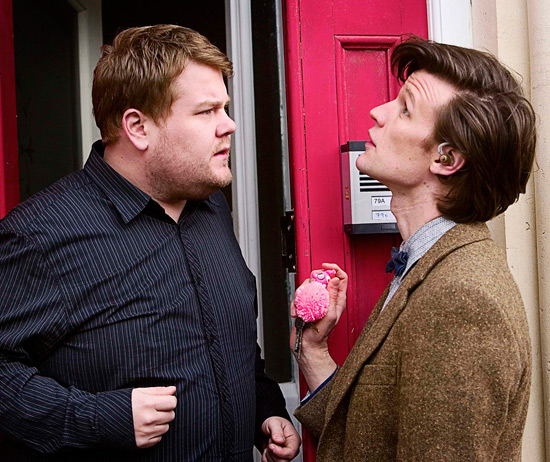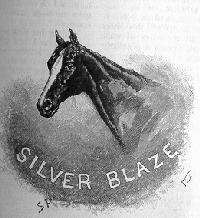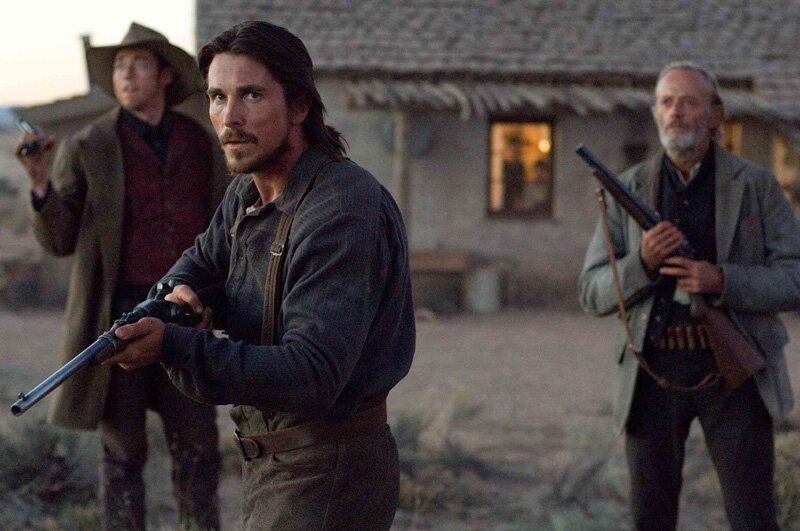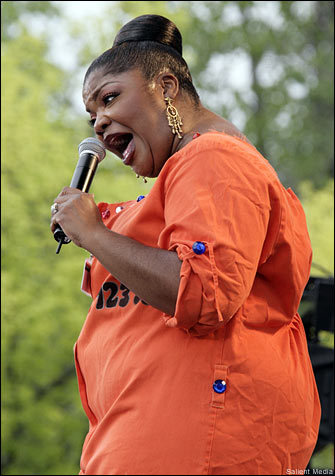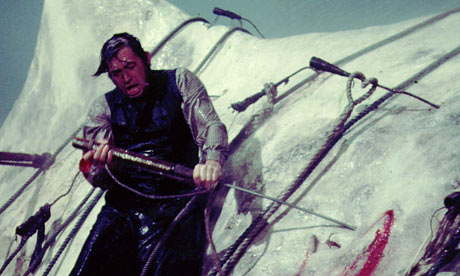 by Courtney Hilden
by Courtney HildenSpoiler Alert: Some of the twists from this episode are given away in this review.
The next installment in the plotline juggling show that is True Blood started out with a literal bang: Sookie shot at a werewolf that had let himself into her house. (Is her house possibly some supernatural magnet? Seems like a lot of bad guys just waltz all over it, including Marianne, who turned it into a brothel mixed with a cult headquarters last season.) There were some other fun twists in the episode, including the revelation that Arlene is pregnant, not with her boyfriend's baby, but with Rene's baby. (For those of you not in the know, Rene was the villain from season one.) It also looks like Jason will become a police officer. It's a smart move, since it'll allow the audience to see more of the Andy/Jason bromance that brought so much comic relief to the last episodes of season two.
Alexander Skarsgard once again gave a stellar performance. He perfectly blends Eric's bad boy posing and his inner romantic. He gives great small touches too, like the patting of the funeral wreath after he buried the dead werewolf in an already recently-buried grave.
 But make no mistakes about Eric; Skarsgard can still give the menace. He's a brilliant leader, one that Machiavelli could be proud of.
But make no mistakes about Eric; Skarsgard can still give the menace. He's a brilliant leader, one that Machiavelli could be proud of.Good quotes were brought to you from Lafayette, of course, who commented that it must feel new when Jason said he had a lot on his mind. Talbot had a good zinger too, telling Cooter that it was insulting to boxes to compare werewolves to them. It's hard not to love sarcastic, teenager little brother, who noted that if Sam threw a punch, he would "totally be one of them."
It might be interesting to see what they're going to do with the Sam storyline, since Sam's little brother seems surprisingly like a sociopath. It's nice that they brought Sam's family to Bon Temps, instead of having the rest of this season's Sam storyline happen elsewhere. My guess is that Sam's family is going to abuse their relationship with him, sucking money from him.
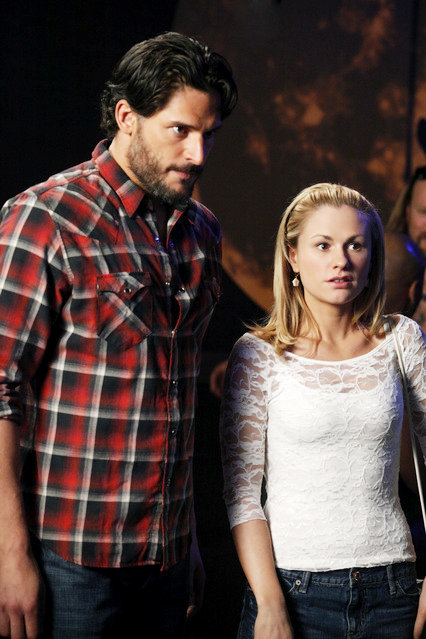 Also making an appearance is Alcide. He's a much more attractive man in this show than I thought he'd be. The other new-ish man, Franklin, is total scum, since he's clearly into blackmailing poor Jessica and Tara. He's not much of a villain, since the only thing lamer than Franklin's come-ons is his theme music.
Also making an appearance is Alcide. He's a much more attractive man in this show than I thought he'd be. The other new-ish man, Franklin, is total scum, since he's clearly into blackmailing poor Jessica and Tara. He's not much of a villain, since the only thing lamer than Franklin's come-ons is his theme music.The plotline that is the least interesting? Bill's. It's hard to care what happens to him, even with the information that he is important to Sophie-Anne. It's hard to even believe he's that important to her, since Sophie-Anne said several episodes ago that she was happy to hear he was out of the way. The flashback featuring Bill and Caroline was decent, given the flashbacks are usually dry and uninspired on this show. It's too bad we can't spend more time with Bill and Caroline, because they're a legitimately interesting couple. Lorena's lines are as terrible as Franklin's, like her whole "Your only loyalty is to your own sentiment," which she said to Bill.
Other not good things about this episode included the stilted post-coital dialogue between Tara and Franklin. It sounded more like a bad film from the forties than two modern adults talking to one another. (Bill and his wife Caroline were also somewhat stilted, though not nearly as bad as much of what came out of other vampire's fang-framed mouths.) The lack of chemistry between Tara and Franklin was particularly noticeable given the easy and sweet dialogue between Sam and Sookie and Tara and Jason. This episode was not as good as the first two of the season, but still fun and with some interesting changes to the storyline of the books.

